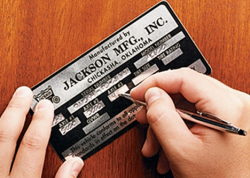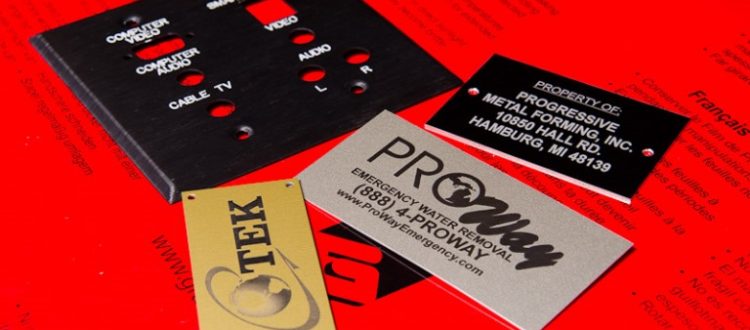Aluminum tags are a great alternative to steel and brass labels. Lightweight and comfortable to use, they provide an ideal metal for many reasons.
Besides being less weighty than stainless steel and brass, these tags are easy to work with, relatively less expensive to produce and effective in a variety of practical uses.
Making Aluminum Tag Labels as Tools for Business

How are the labels used? In more ways than the average person may realize. They are used for tagging merchandise, particularly in an inventory control system. Tiny ones identify the material being categorized as to help control assets by category and make the auditor’s job flow smoothly and easily.
They can be stamped using a metal tool for asset identification purposes. Colored or plain, they help save time and get information quickly and easily. They are usually attached effortlessly so that the inventory control clerk can find them, hold them in their hand, and record the number which corresponds to the assets in the general ledger.
In the past, large assets and equipment often used a stamped on serial number that was located in some hard to find place, like under the hood, on the engine itself or some other oily and greasy place. Those tending the books shouldn’t have to be mechanically inclined in order to get to the identification or serial number! This is what makes them so useful and streamlined in getting a job done. Best of all, they are easy to access so that the record keeper doesn’t lose time or get his or her hands unnecessarily filthy.
The aluminum tags can be used for trees, as well. They can indicate the tree name, type, or whether it is a deciduous or an evergreen tree. When they are small plants, they may be unidentifiable, and they help. They are used in nurseries, greenhouses, botanical research facilities and any place where the types of trees on young seedlings may not be immediately apparent. They serve as little name tags to the types of growing things that are being cultivated prior to resale to the general public.
Furthermore, the labels are also used as a good was of identifying serial code numbers, especially tools or equipment that is not easily identified. Just a wire or wire tie is all you need to securely affix a tag onto the asset which needs to be controlled for depreciation purposes. The code serial number or I.D. is a useful thing to keep similar items separately identifiable. They pretty much work well in identifying your asset without having to carve into the object itself.
Production lines also use these throughout the production process; it saves time and eliminates the need for long, time wasting conversations and discussions. They say it all! The next work station sees what the current status is and responds accordingly.
Aluminum Tag Material
Aluminum tags can look like coins – or be squared off. Their edges may be smooth, or filed in a horizontal way, like a quarter is. The thickness may also vary – from .001“ to .050“ in width.
They can be regular or anodized if too much shine is not desired. They can be stamped upon or written on, depending on the type of business you’re in and the needs you must fulfill. Barcode tags may also be made of aluminum, affixed directly to the item you are controlling. They may be lightweight, but they are sturdy and last a long, long time. The advantage of using this metal is that it’s a much less expensive than stainless steel or brass.
Whether you choose fixed or hanging aluminum tags, they last a long time, most likely for the life of the asset.
Popular Posts:




